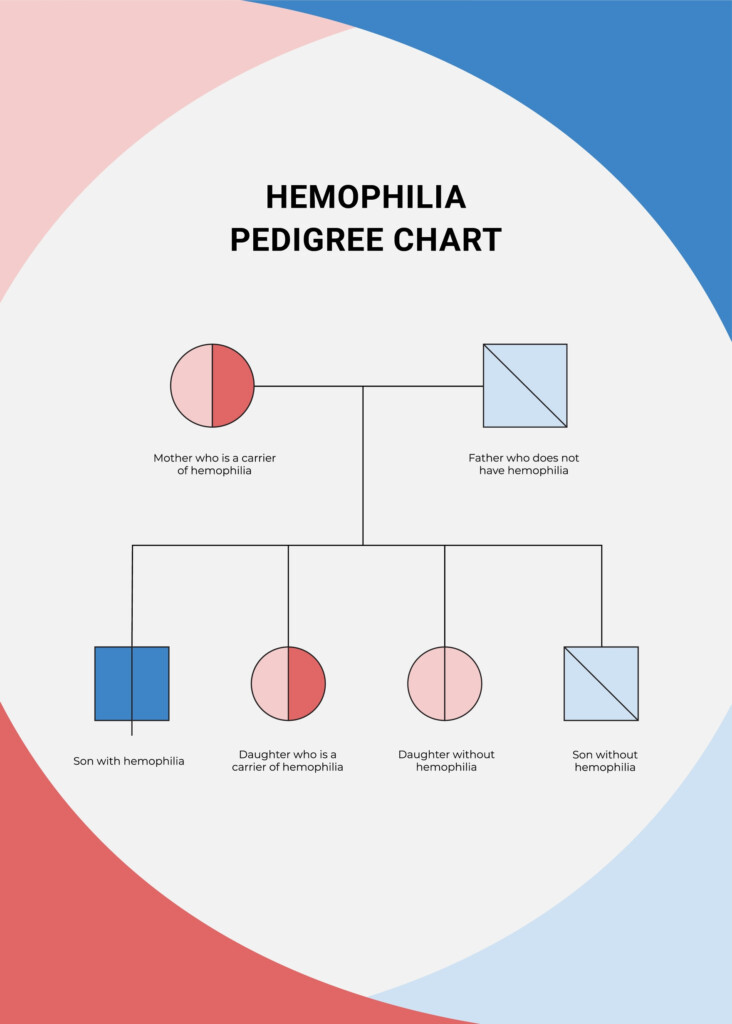A pedigree chart is a visual representation of a person’s family history, showing the relationships between individuals across multiple generations. In the context of hemophilia, a pedigree chart can be used to track the inheritance of the genetic disorder within a family.
Each individual in the pedigree chart is represented by a symbol, typically a circle for females and a square for males. Connections between individuals, such as marriages and offspring, are indicated by lines linking the symbols.
Pedigree Chart For Hemophilia
Understanding Hemophilia in a Pedigree Chart
Hemophilia is a genetic disorder that affects the blood’s ability to clot properly, leading to prolonged bleeding and easy bruising. It is caused by mutations in genes that control the production of clotting factors in the blood.
In a pedigree chart for hemophilia, individuals who have the disorder are typically indicated by shaded symbols, while carriers of the gene are represented by half-shaded symbols. By examining the pedigree chart, patterns of inheritance can be identified, such as whether hemophilia is passed down through generations or appears sporadically.
Interpreting a Pedigree Chart for Hemophilia
When analyzing a pedigree chart for hemophilia, certain patterns may emerge that can provide valuable information about the genetic inheritance of the disorder within a family. For example, hemophilia is an X-linked recessive disorder, meaning that it is more commonly passed from mothers to sons.
By studying the relationships and patterns in a pedigree chart, healthcare professionals and genetic counselors can provide insights into the likelihood of hemophilia being passed on to future generations and offer guidance on genetic testing and family planning options.
